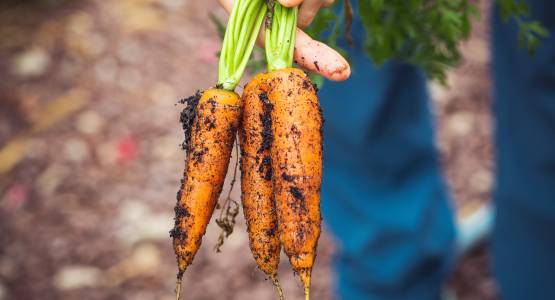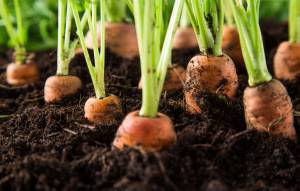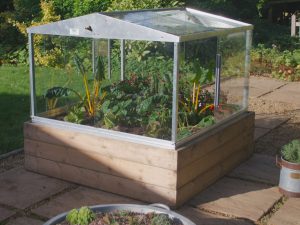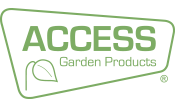How to Grow Carrots in Containers: A Complete Guide

Carrots are one of the most rewarding vegetables to grow at home — sweet, crunchy, and packed with nutrients. But what if you don’t have a garden? No problem! Carrots thrive in containers, making them perfect for patios, balconies, or even windowsills – We show you how in this ‘How To Grow Carrots In Containers’ blog. With the right setup and a little care, you can harvest crisp, delicious carrots no matter how small your outdoor space is.
In this comprehensive guide, we’ll walk you through everything you need to know about growing carrots in containers in the UK climate — from choosing the right varieties and soil to watering tips and harvesting advice.
/
Why Grow Carrots in Containers?
Growing carrots in containers has several advantages:
- Space-saving: Perfect for small spaces or urban living.
- Control: You have complete control over soil quality and moisture.
- Fewer pests: Carrot root fly is less of an issue in containers, especially if elevated.
- Easy access: No bending or digging necessary!
What You’ll Need
Before you get started, gather these essentials:
- Deep containers (at least 30cm/12in deep)
- High-quality compost or a sandy loam mix
- Carrot seeds (choose a container-friendly variety)
- Watering can or hose with a fine rose
- Slow-release fertiliser (optional)
- Labels or markers for sowing dates
Choosing the Right Container
The container you choose is crucial to your carrot-growing success. Carrots need depth to grow straight and long, so the deeper the pot, the better.
Recommended container types:
- Large plastic pots
- Deep wooden planters
- Repurposed buckets with drainage holes
- Raised troughs
Ensure your container is at least 30cm deep and has good drainage. Carrots hate soggy roots!
🪴 TIP: Use a container that’s wider than it is tall to grow more carrots in a single sowing.
Best Carrot Varieties for Containers (UK)
Not all carrots are created equal when it comes to container growing. Shorter or round varieties perform best in restricted spaces.
Top container carrot varieties:

- ‘Paris Market’ – Small, round carrots with a sweet flavour.
- ‘Chantenay’ – Short and broad-rooted, perfect for pots.
- ‘Adelaide’ – A fast-growing early variety.
- ‘Amsterdam Forcing’ – Slender and tender; good for early sowings.
Look for varieties labelled as early, short-rooted, or ideal for containers.
Soil & Compost for Growing Carrots
Carrots grow best in light, sandy, and stone-free soil. They will fork or split if they hit hard soil or stones.
Recommended soil mix:
- 3 parts multi-purpose compost
- 1 part horticultural sand (to improve drainage and texture)
- Avoid using manure or overly rich compost as it encourages branching.
Mix well and fill your container, leaving a couple of centimetres at the top.
🪴 TIP: Sieve your compost if possible to remove clumps or stones. Smooth, fine soil leads to smooth, straight carrots.
How to Sow Carrot Seeds in Containers
Carrots don’t like being transplanted, so always sow directly into the container.
Step-by-step guide:
- Pre-moisten the soil slightly before sowing.
- Sow seeds thinly in rows or scatter-sow across the surface.
- Cover lightly with a 0.5–1cm layer of compost or vermiculite.
- Label the sowing date and variety.
- Mist or water gently with a fine rose to avoid disturbing the seeds.
Carrot seeds are small and slow to germinate — expect sprouts in 10–21 days, depending on temperature.
Position and Sunlight
Carrots need plenty of sunlight, ideally 6+ hours of direct sun per day. In the UK, place your container in the sunniest spot available, such as:
- A south-facing balcony
- A sunny patio
- A greenhouse or cold frame (especially in early spring)
If sunlight is limited, choose fast-growing or early varieties and sow in mid-spring to make the most of longer days.

Watering and Feeding
Watering
Carrots need consistent moisture, especially during germination and root development. However, avoid waterlogging, which can lead to rot.
Best watering tips:
- Water deeply once or twice a week, depending on rainfall.
- Let the top inch of soil dry out slightly between waterings.
- Use a watering can with a fine rose to avoid disturbing seedlings.
Feeding
Carrots are light feeders. If your compost is good quality, you may not need to fertilise. However, if you’re reusing compost or want a boost:
- Use a balanced liquid feed every 3–4 weeks.
- Avoid high-nitrogen fertilisers, which promote leafy growth over roots.
Thinning Seedlings
Once your carrot seedlings are about 2.5cm tall, it’s time to thin them. This step is crucial for healthy root development.
How to thin:
- Gently pull out weaker seedlings, leaving 2–5cm spacing depending on the variety.
- Try to do this in the evening or on a cloudy day to avoid attracting carrot fly.
- Dispose of thinnings away from the growing area.
🪴 TIP: Use scissors to snip the tops off thinnings rather than pulling to avoid disturbing nearby roots.
Common Pests and Problems
Carrot Root Fly
The most common carrot pest. Flies lay eggs at the base of seedlings; the larvae burrow into roots.
Prevention tips:
- Use insect mesh or fleece over the container.
- Grow in raised containers or on tables (50cm+ off the ground).
- Avoid thinning during the day.
- Plant strong-smelling companions like spring onions or rosemary nearby.
Forking and Splitting
Caused by stony soil, too much nitrogen, or uneven watering.
Prevention tips:
- Use fine, stone-free compost.
- Water consistently.
- Avoid high-nitrogen feeds.
When and How to Harvest
Most carrot varieties take between 60–90 days to mature. Check your seed packet for guidance.
Signs they’re ready:
- Shoulders of the carrots visible above soil
- Bright orange colour
- Leaf tops starting to yellow slightly
To harvest:
- Gently loosen the soil with a hand trowel.
- Grip the base of the greens and pull straight up.
- If resistant, twist gently while pulling.
Don’t wait too long — over-mature carrots can become woody and tough.
Growing Timeline (UK Climate)
| Month | Activity |
| March–May | Sow early carrots under cover or in containers |
| April–June | Sow main crops outdoors |
| June–July | Continue sowing for late harvests |
| July–September | Harvest early and mid-season crops |
| October–November | Harvest late varieties; store in sand if needed |
Bonus Tips for Container Carrots
- Succession sow every 2–3 weeks from March to July for a continuous harvest.
- Mulch the top of the soil to retain moisture in hot weather.
- Reuse the green tops in pestos, soups, or salads — they’re edible!
- Bring containers under cover during heavy rain to avoid waterlogging.
Final Thoughts
Growing carrots in containers is a fun and productive way to enjoy fresh veg, even if you’re tight on space. With the right container, soil mix, and some regular care, you can enjoy a crunchy harvest from your own balcony or patio.
So whether you’re a seasoned gardener or just starting out, give container-grown carrots a try this season — your tastebuds will thank you!
